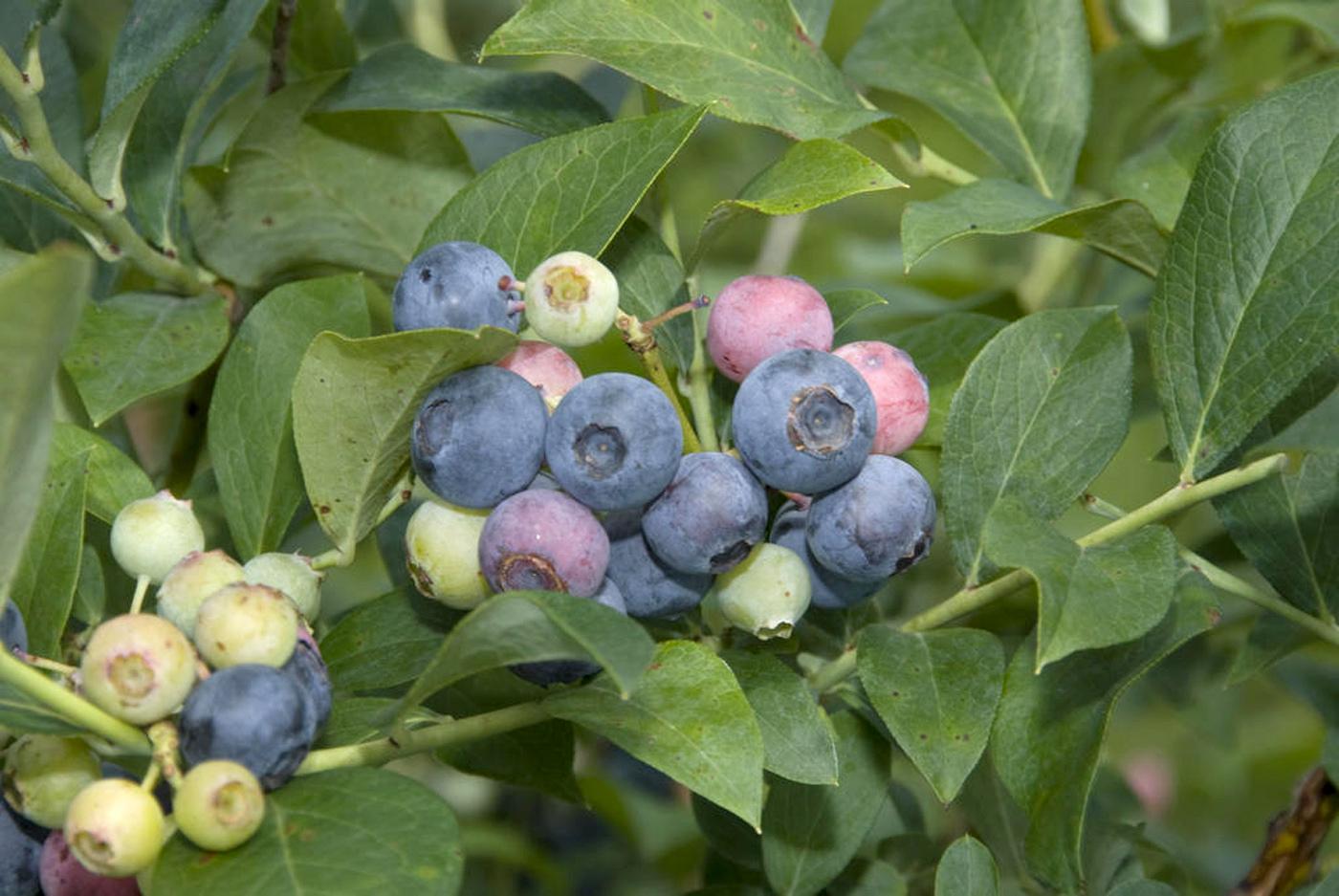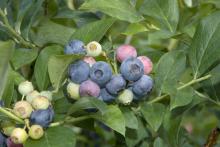Information Possibly Outdated
The information presented on this page was originally released on March 4, 2010. It may not be outdated, but please search our site for more current information. If you plan to quote or reference this information in a publication, please check with the Extension specialist or author before proceeding.
Edible plants allow grazing in landscape
If limited time or garden space challenges you to decide between an ornamental landscape and a vegetable or fruit garden, you may want to look at both of these areas from a new perspective.
The concept of incorporating edible plants into an ornamental garden is not new. Many of us are already doing it. Adding a pot of rosemary or parsley to your patio certainly qualifies. Most perennial or annual herbs or vegetables are great for containers or borders and can be beautiful as well as tasty.
Lately, I have been looking at edible fruiting shrubs with a fresh eye. There are many choices, and some make excellent accents or specimens while others are best used as screens.
These edible garden additions have benefits other than just the culinary ones. Many selections offer attractive foliage, fall color, interesting blooms and intriguing winter branching structure in addition to fruit packed with vitamins.
Scientific research indicates that the fruit that tastes good is also good for you. You can take a stroll through your edible garden and harvest a handful of fiber, vitamins and antioxidants. The plants you decide to add will depend on the space you have available, the amount of sunlight and whether or not you like to eat them.
One of my favorites is the loquat or Japanese plum. This is a small evergreen tree that produces fragrant flowers in autumn and juicy, orange, pear-shaped fruit that ripens in the spring. Loquat makes an excellent accent or specimen, as the coarse-textured foliage lends a tropical flair to the landscape.
Another good landscape plant is the pineapple guava, a medium-sized evergreen shrub with blue-green foliage. It produces showy pink flowers in the spring and pineapple-flavored fruit that is ready by summer. Use pineapple guava for a hedge or a screen.
I also like the pomegranate, a small, deciduous tree. It produces bright orange, yellow or white flowers and golf ball- to softball-sized fruit. There are many varieties of pomegranate of various sizes and fruit and flower colors. Pomegranate is a tough little tree that makes a terrific accent or patio plant.
The rabbiteye blueberry is a medium-sized, semi-evergreen shrub that makes a good landscape addition. It has silvery-blue foliage, pinkish-white flowers, summer fruit and outstanding fall color. Rabbiteye will fruit better if you plant more than one variety, and these can be chosen to extend the fruiting season. Use these shrubs as a screen or hedge.
And lastly, don’t overlook the common fig, a large, deciduous shrub or small tree. Its coarse-textured foliage provides an interesting contrast in the garden. Celeste is cold-hardy and a good home garden selection.
These trees and shrubs provide culinary rewards and significant visual ones, too. All have beautiful foliage, flowers and fruit. None have serious insect or disease problems, so chemicals are rarely necessary.
So liven up your ornamental landscape by adding a few plants you can graze on. Your local garden centers and nurseries are loaded with new stock this spring. Give it a try -- get your graze on. I guarantee you will love it.








